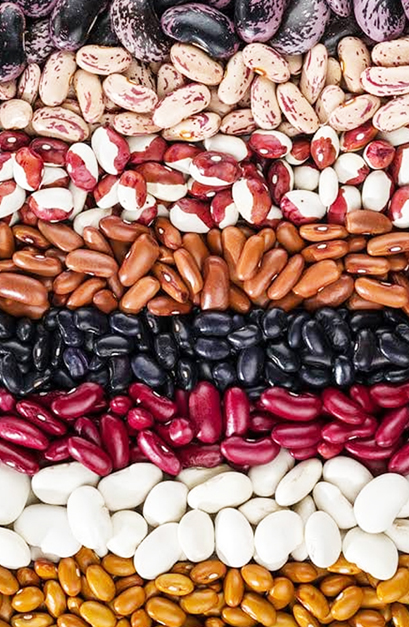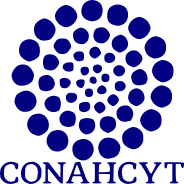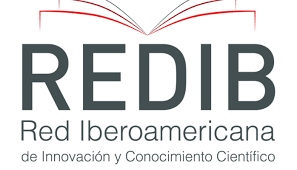Genetic diversity in the Durango race population complex of common bean >Phaseolus vulgaris L.
DOI:
https://doi.org/10.18387/polibotanica.59.20Keywords:
Phaseolus, germplasm, collection, conservation, sustainability.Abstract
Durango is an important center of genetic diversity and domestication of common bean (Phaseolus vulgaris L.). Several commercial classes of common bean were originated from the Durango Race Population Complex and show tolerance to water stress. The objective of this work was to determine the genetic diversity of the common bean Durango Race Population Complex. Seeds were randomly collected from individual plants in native populations and intermediate forms in La Ferrería, Dgo., México. Twenty-six common bean collections were used [wild (11), intermediate or regressive forms (7), landrace varieties (4) and improved cultivars (4)] and an accession of Phaseolus coccineus L., was also used as a reference. The seeds were sown under field conditions on July 10th, 2023, in Durango, Mex., to perform morpho-agronomic and molecular characterization. Forty-eight morpho-agronomic traits were recorded, and amplification profiles were obtained with four pairs of ISTR (Inverse Sequence Tagged Repeat) molecular marker primers. The data generated were analyzed with descriptive statistics, principal component analysis (PCA) and cluster analysis (UPGMA - Unweighted Pairwise Clustering with Arithmetic Averages, Jaccard). The computer programs R (2023.12.0+369), GelAnalyzer (23.1) and PAST4- 4.15 were used. The PCA of morpho-agronomic traits showed a low proportion of variance explained by each principal component (PC). The PC 1 showed that the highest level of variance explanation was related to seed size and pod width. The cluster analysis revealed the most pronounced difference between P. coccineus and all the common bean accessions. The native common bean group (IIa) was divided into two sub-groups, one included the bayo (beige), brown and black bean accessions (IIa1); the other (IIa2), the small bayo (beige) and flor de mayo seeded accessions. The other group (IIb) consisted of two sub-groups, one with pinto bean varieties (IIb1), as well as intermediate forms of flor de mayo with large seeds. The morpho-agronomic traits allowed discrimination of the landrace varieties, improved cultivars and flor de mayo (pink) regressive forms. Another sub-group (IIb2) included two landrace varieties, known as Pinto Burro and Borroso, considered as interracial recombinants. The ISTR molecular markers produced 69 polymorphic bands and the B8/F9 primer combination registered the highest polymorphism level (86%). The cluster analysis generated by using four ITSR combinations showed clear separation of the common bean evaluated germplasm. The group I included native germplasm with two sub-groups and the Borroso variety, considered as a genetic recombinant. The group II included landrace and improved common bean germplasm, with two sub-groups, one (IIa) with a marked separation for a common bean collection with small bayo grains (LF 2), landrace varieties of the Jalisco race (Negro San Luis) and intermediate forms resulting from genetic recombination between races. Another clade included landrace and improved varieties of the Durango Race (Bayo Madero and Pinto Saltillo) and intermediate (regressive forms), with medium-large brown, black and flor de mayo seeds. The sub-group IIb included only P. coccineus. The use of morpho-agronomic attributes and molecular genetic markers allowed the evaluation of the genetic diversity present in the Durango Race Population Complex of common bean. Native populations and intermediate forms of common bean from Durango can be discriminated by morphometric traits and molecular markers, according to their genetic and geographic origin.
References
Chacón-Sánchez, M. I. 2009. Darwin y la domesticación de plantas en las Américas: El caso del maíz y fríjol. Acta Biológica Colombiana 14: 351-363.
Chacón-Sánchez, M. I., J. Martínez-Castillo, J. Duitama, and D. G. Debouck. 2021. Gene flow in Phaseolus beans and its role as a plausible driver of ecological fitness and expansion of cultigens. Frontiers of Ecology and Evolution 9: 618709, 1-25.
Chan, T. W. V. 1992. Extraction of nucleic acids from clinical samples and cultured cells. In: Diagnostic Molecular Pathology. A Practical Approach (Herrington, C. S., J. O’D. McGee, Eds.). IRL Press, New York, pp. 1-23.
Coelho, R. C., M. A. Faria, J. Rocha, A. Reis, M. B. P. P. Oliveira, and E. Nunes. 2009. Assessing genetic variability in germplasm of Phaseolus vulgaris L. collected in Northern Portugal. Scientia Horticulture 122(3): 333-338. https://doi.org/10.1016/j.scienta.2009.05.035
Espinosa-Pérez, E. N., P. Ramírez-Vallejo, M. M. Crosby-Galván, J. A. Estrada-Gómez, B. Lucas-Florentino y J. L. Chávez-Servia. 2015. Clasificación de poblaciones nativas de frijol común del Centro-Sur de México por morfología de semilla. Revista Fitotecnia Mexicana 29(1): 29-38.
García M., E. 1987. Modificaciones al sistema de clasificación climática de Köppen (Para adaptarlo a las condiciones de la República Mexicana). 4a. ed. Enriqueta García de Miranda. México, D. F. 217 p.
Hammer, Ø., D. A. T. Harper, y P. D. Ryan. 2001. PAST: Paleontological Statistics software package for education and data analysis. Palaeontologia Electronica 4(1): 9pp.
INAH (Instituto Nacional de Antrpología e Historia). 2024. La Ferrería. Consultado en línea 29/07/2024. https://www.inah.gob.mx/zonas/zona-arqueologica-la-ferreria
INIFAP (Instituto Nacional de Investigaciones Forestales, Agrícolas y Pecuarias). 2017. Agenda técnica agrícola. Durango y La Laguna. México. 196 p.
Long, J., J. Zhang, X. Zhang, J. Wu, H. Chen, P. Wang, Q. Wang, and C. Du. 2020. Genetic diversity of common bean (Phaseolus vulgaris L.) germplasm resources in Chongqing, evidenced by morphological characterization. Frontiers in Genetics 11: 697.
Medina G., G., G. Díaz P., J. López H., J. A. Ruiz C., y M. Marín S. 2005. Estadísticas climatológicas básicas del estado de Durango (Periodo 1961-2003). Libro Técnico Núm. 1. SAGARPA-INIFAP-CIRNOC-Campo Experimental Valle del Guadiana. Durango, Dgo. México. 224 p.
Orozco-Arias, S., M. S. Candamil-Cortes, P. A. Jaimes, E. Valencia-Castrillon, R. Tabares-Soto, G. Isaza, and R. Guyot. 2022. Automatic curation of LTR retrotransposon libraries from plant genomes through machine learning. Journal of Integrative Bioinformatics 19: 20210036. https://doi.org/10.1515/jib-2021-0036
Osorio Z., M. A., D. Infante, y S. Molina. 2006. Variación genética asexual en Agave cocui Trealease. Boletín Nakari 17:1-7.
Paszkowski, J. 2015. Controlled activation of retrotransposition for plant breeding. Current Opinion in Biotechnology 32: 200–206. http://dx.doi.org/10.1016/j.copbio.2015.01.003
Punzo D., J. L. and A. Ramírez L. 2008. The Chalchihuites chronology revisited. The Guadiana Branch. 73th Annual Meeting, Vancouver BC Canada. 9 p.
Rosales-Serna, R., J. Kohashi-Shibata, J. A. Acosta-Gallegos, C. Trejo-López, J. Ortiz-Cereceres, and J. D. Kelly. 2004. Biomass distribution, maturity acceleration and yield in drought-stressed common bean cultivars. Field Crops Res. 85: 203-211. https://doi.org/10.1016/S0378-4290(03)00161-8
Rosales-Serna, R., C. M. Reyes-Rodríguez, N. Almaraz-Abarca, D. Sierra-Zurita, J. L. Becerra-López, S. Santana-Espinoza., and M. Ehsan. 2024. Global warming effects on natural populations of the Durango Race Common Bean Complex. Annual Report of the Bean Improvement Cooperative 67: 75-76.
Sanguinetti, C. J., E. Dias-Neto, A. J. G. Simpson. 1994. Rapid silver staining and recovery of PCR products separated on polyacrylamide gels. Biotechniques 17: 915-919.
Singh, S. P., P. Gepts, and D. G. Debouck. 1991. Races of common bean (Phaseolus vulgaris, Fabaceae). Economic Botany 45:379-396.
SNICS (Servicio Nacional de Inspección y Certificación de Semillas). 2017. Frijol (Phaseolus vulgaris L.). Guía técnica, para la descripción varietal (2a Edición, 2017). SNICS-SAGARPA. CDMX. México. 41 p.
UPOV (Unión Internacional para la Protección de las Obtenciones Vegetales). 2012. Directrices para la ejecución del examen de la distinción, la homogeneidad y la estabilidad, para judía común, alubia, Phaseolus vulgaris. TG/12/9. http://www.upov.int/edocs/tgdocs/es/tg012.pdf
Wallander-Compeán, L., N. Almaraz-Abarca, G. Alejandre-Iturbide, J. N. Uribe-Soto, J. A. Ávila-Reyes, R. Torres-Ricario, Y. Herrera-Arrieta y E. A. Delgado Alvarado. 2022. Variación fenológica y morfométrica de Phaseolus vulgaris (Fabaceae) de cinco poblaciones silvestres de Durango, México. Botanical Sciences 100: 563-578.
Yu Z., Li J., H. Wang, B. Ping, X. Li, Z. Liu, B. Guo, Q. Yu, Y. Zou,Y. Sun, F. Ma, and T. Zhao. 2024. Transposable elements in Rosaceae: Insights into genome evolution, expression dynamics, and syntenic gene regulation. Horticulture Research 11: uhae118. https://doi.org/10.1093/hr/uhae118
Zizumbo-Villarreal, D., P. Colunga-GarcíaMarín, E. Payró de la Cruz, P. Delgado-Valerio, and P. Gepts. 2005. Population structure and evolutionary dynamics of wild–weedy–domesticated complexes of common bean in a Mesoamerican Region. Crop Science 45(3): 1073-1083.

Downloads
Published
License

Polibotánica by Departamento de Botánica de la Escuela Nacional de Ciencias Biológicas del Instituto Politécnico Nacional se distribuye bajo una Licencia Creative Commons Atribución-NoComercial-CompartirIgual 4.0 Internacional.



















